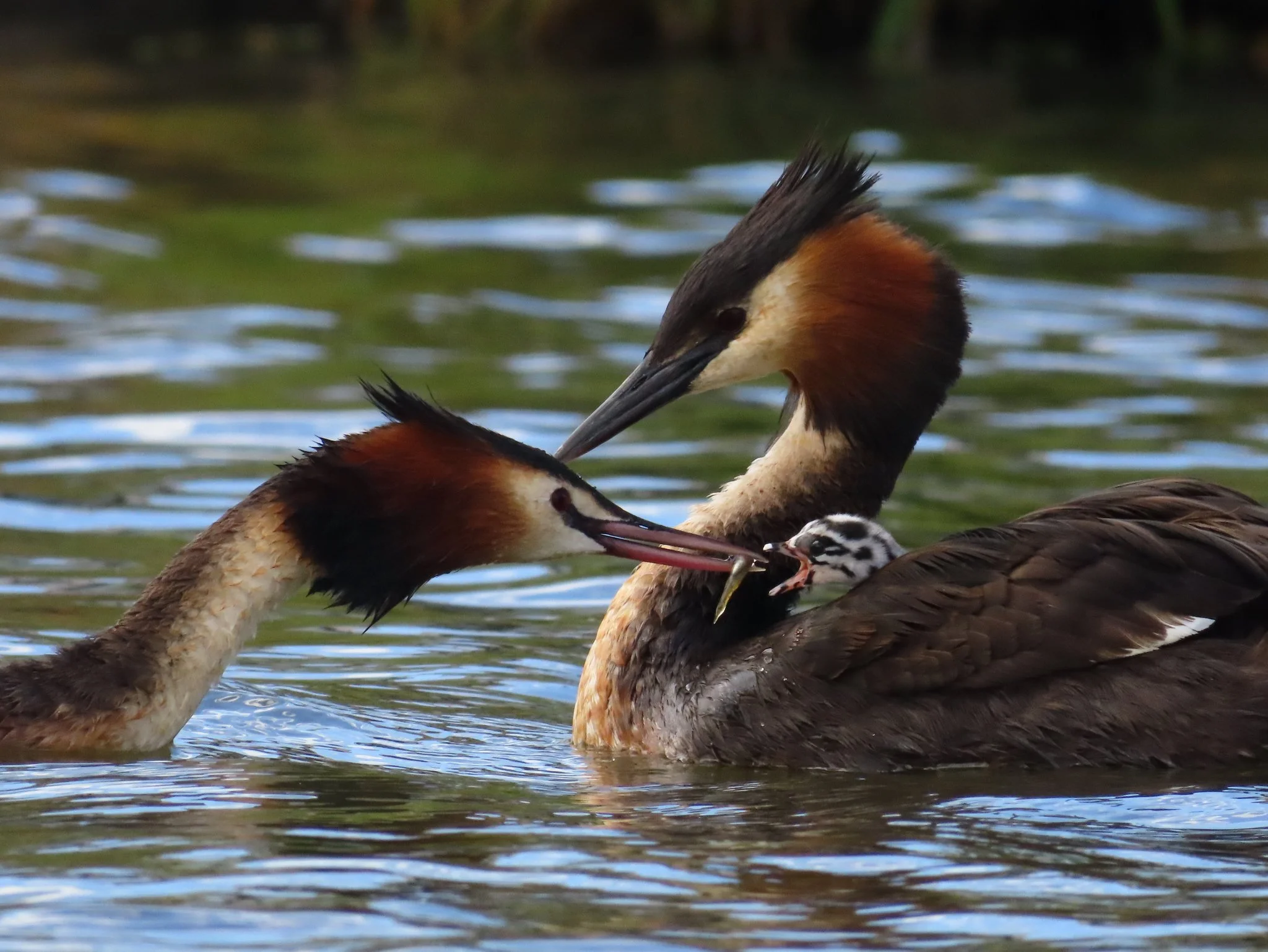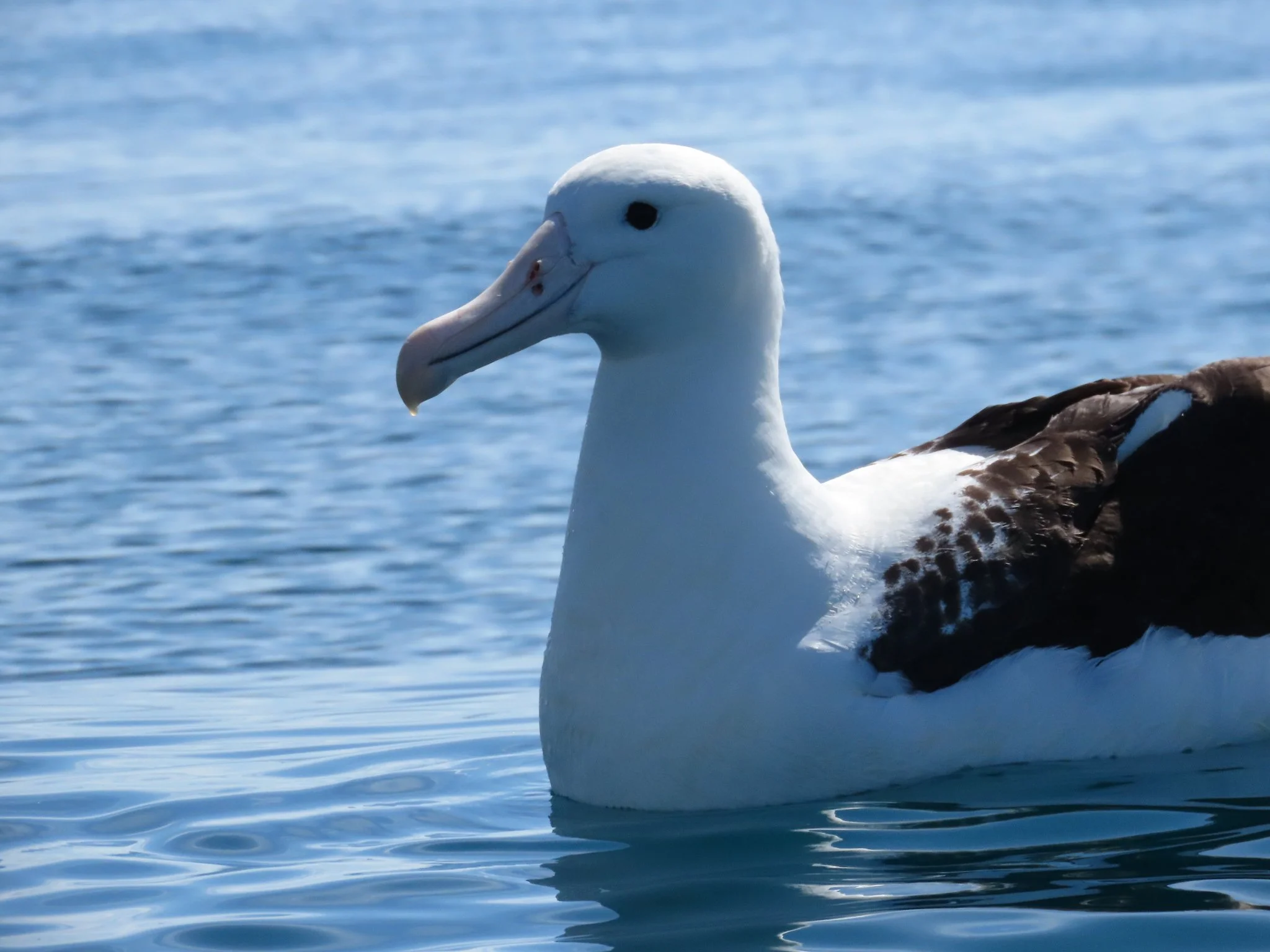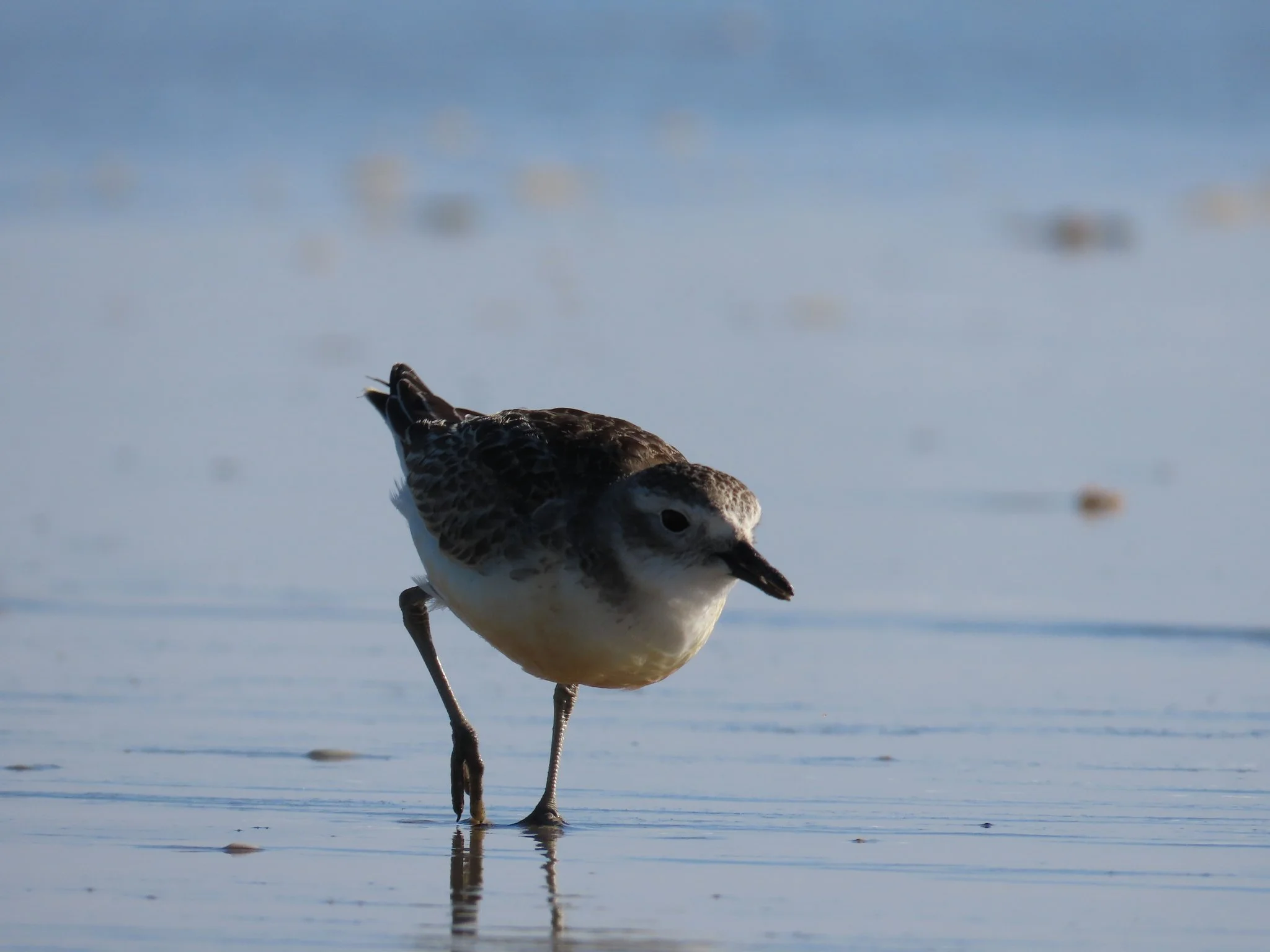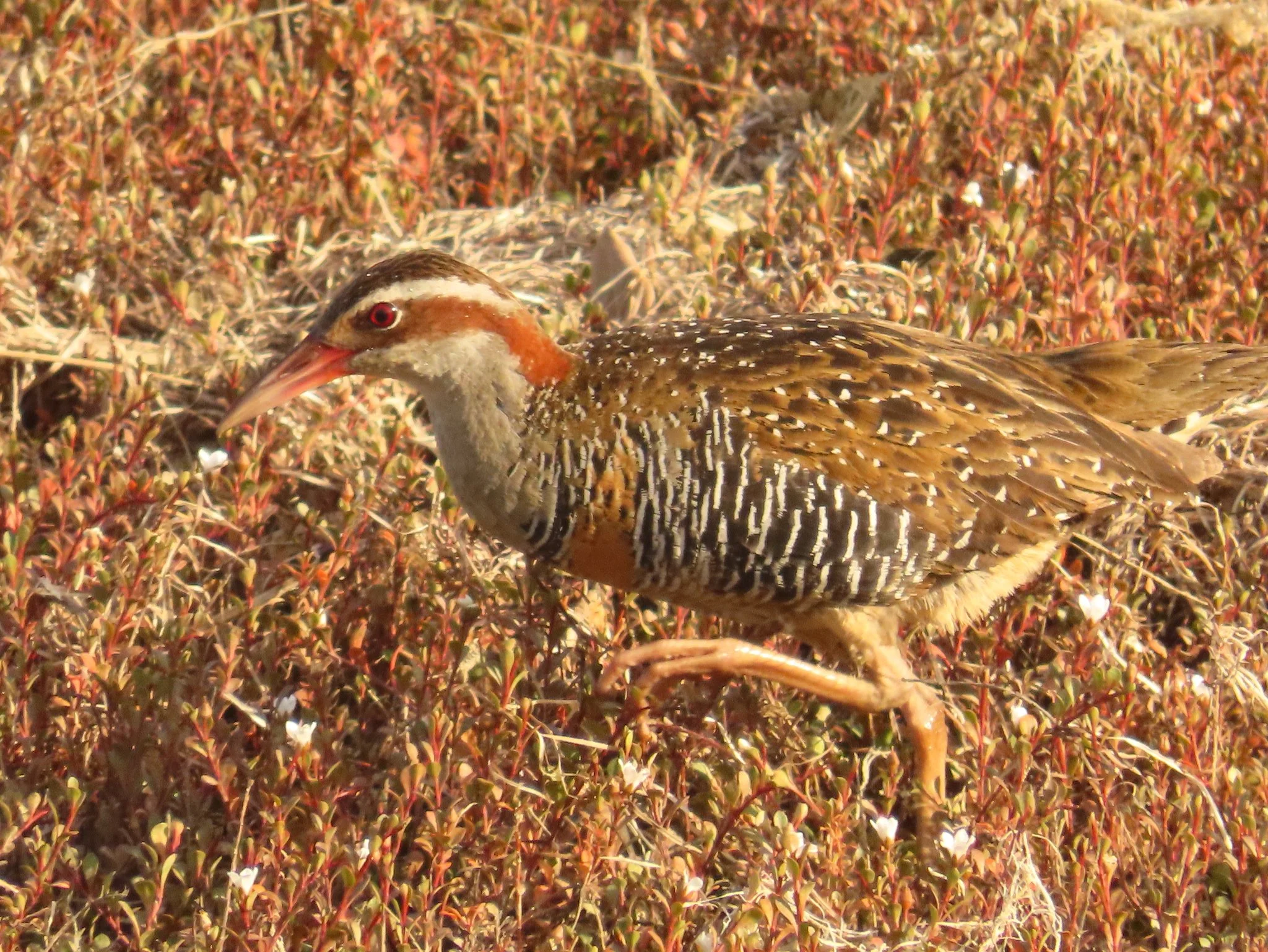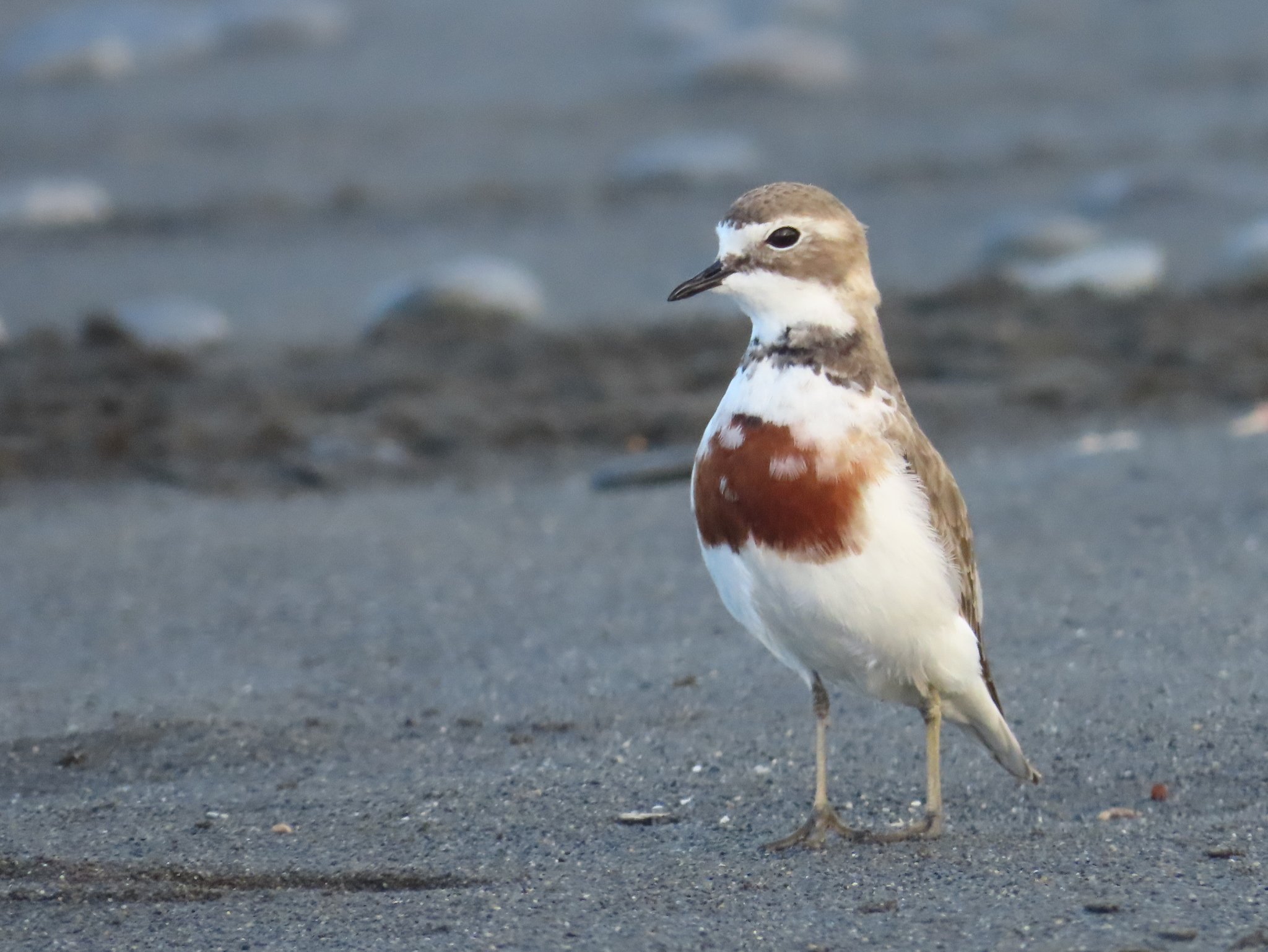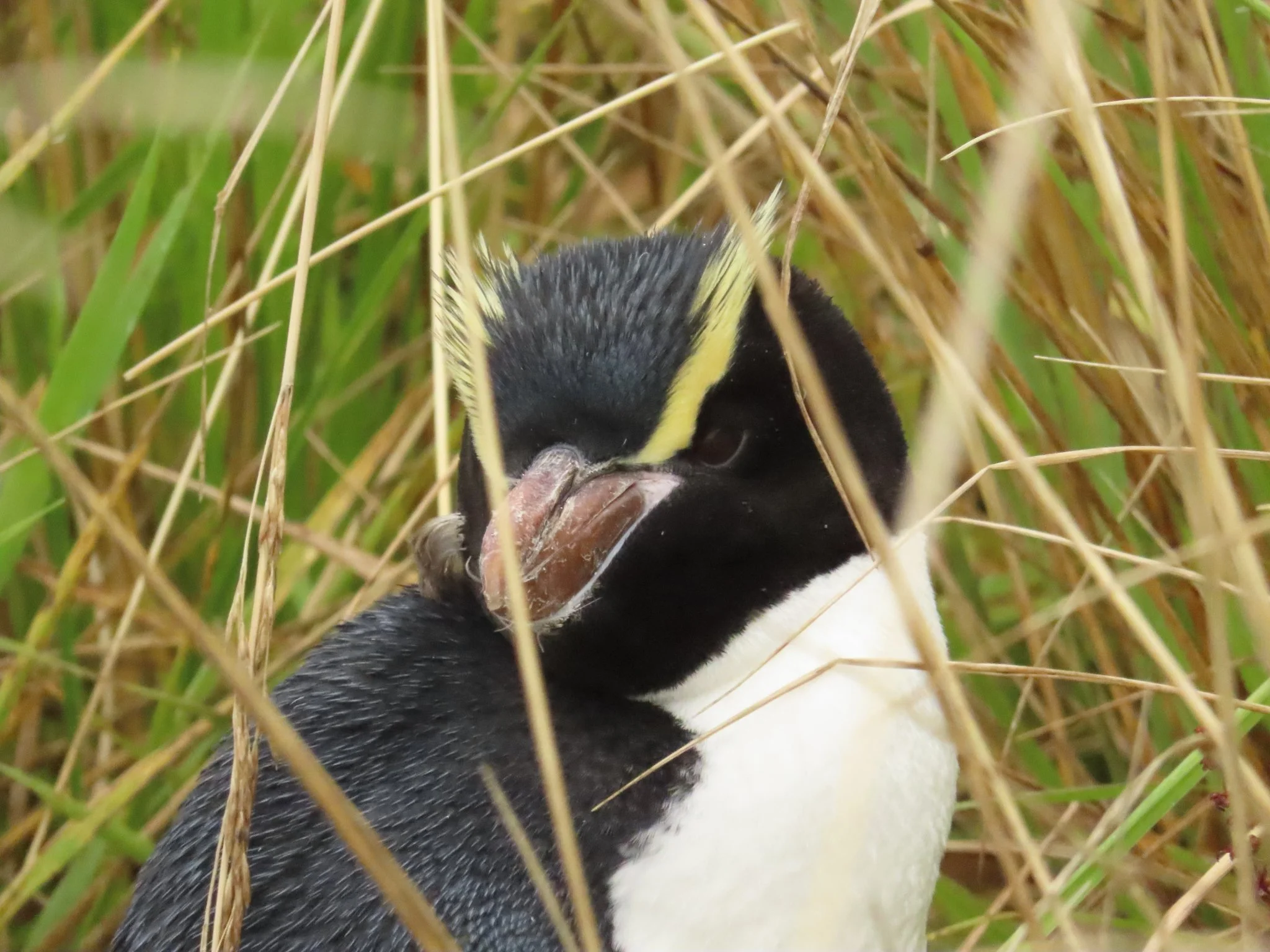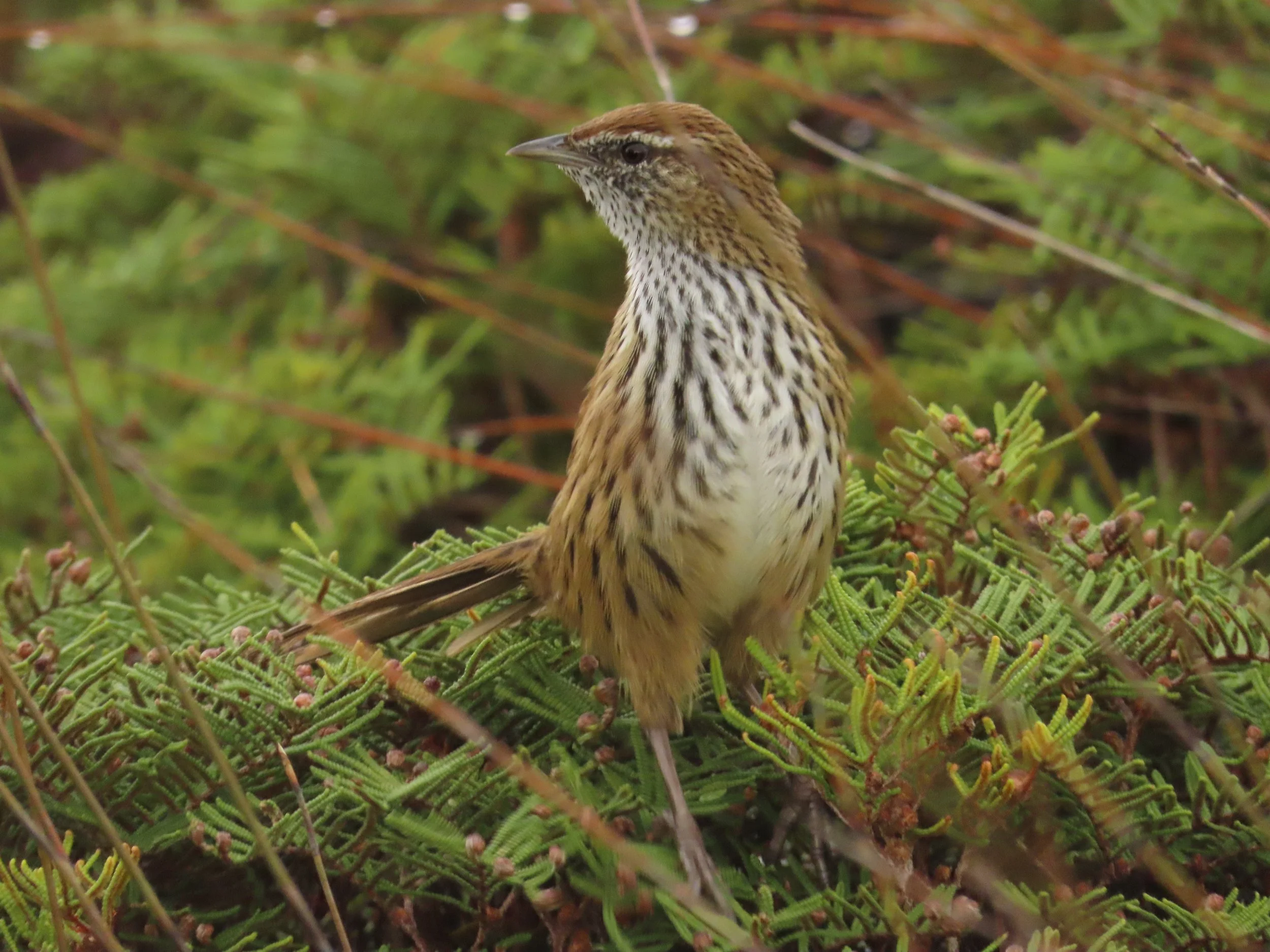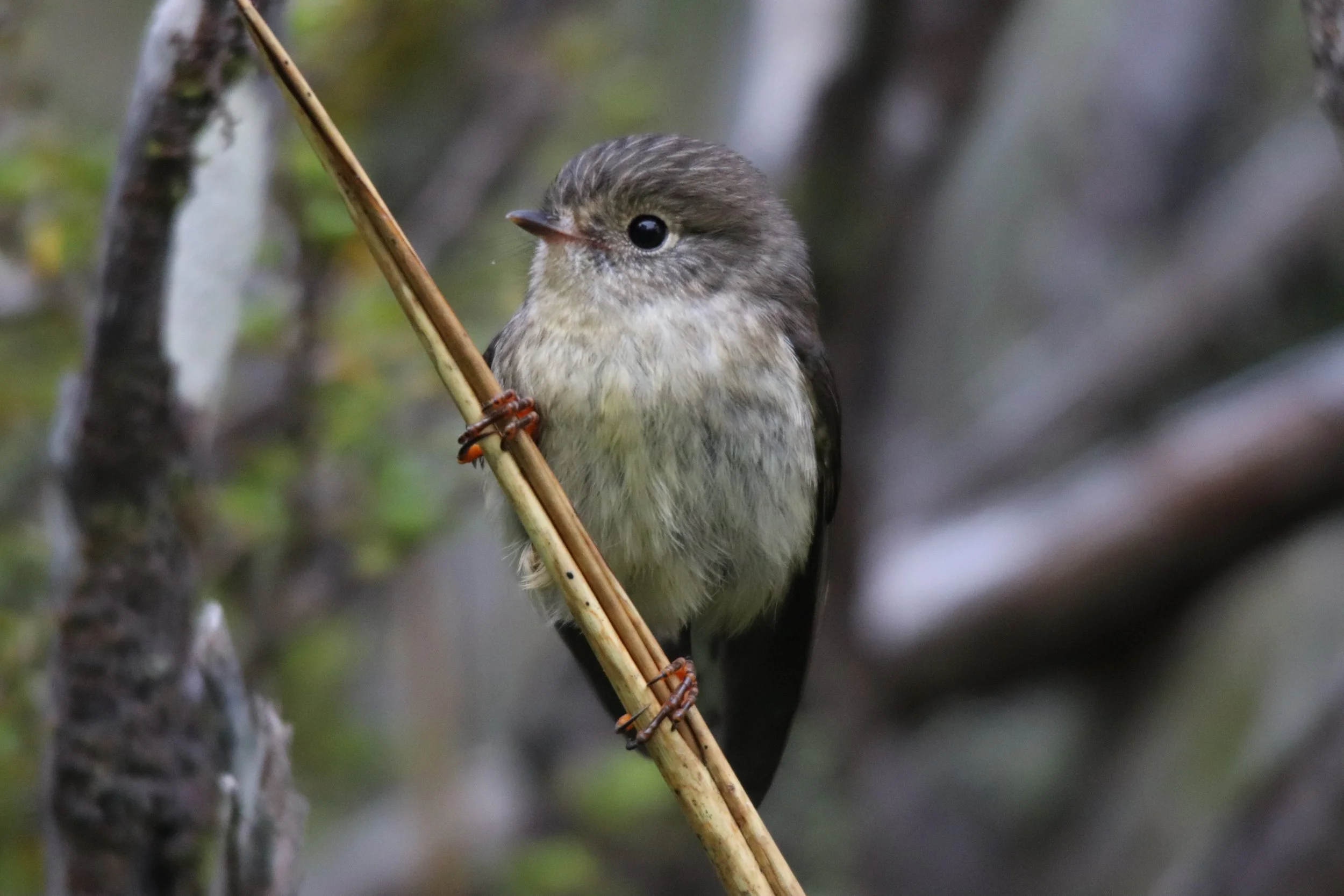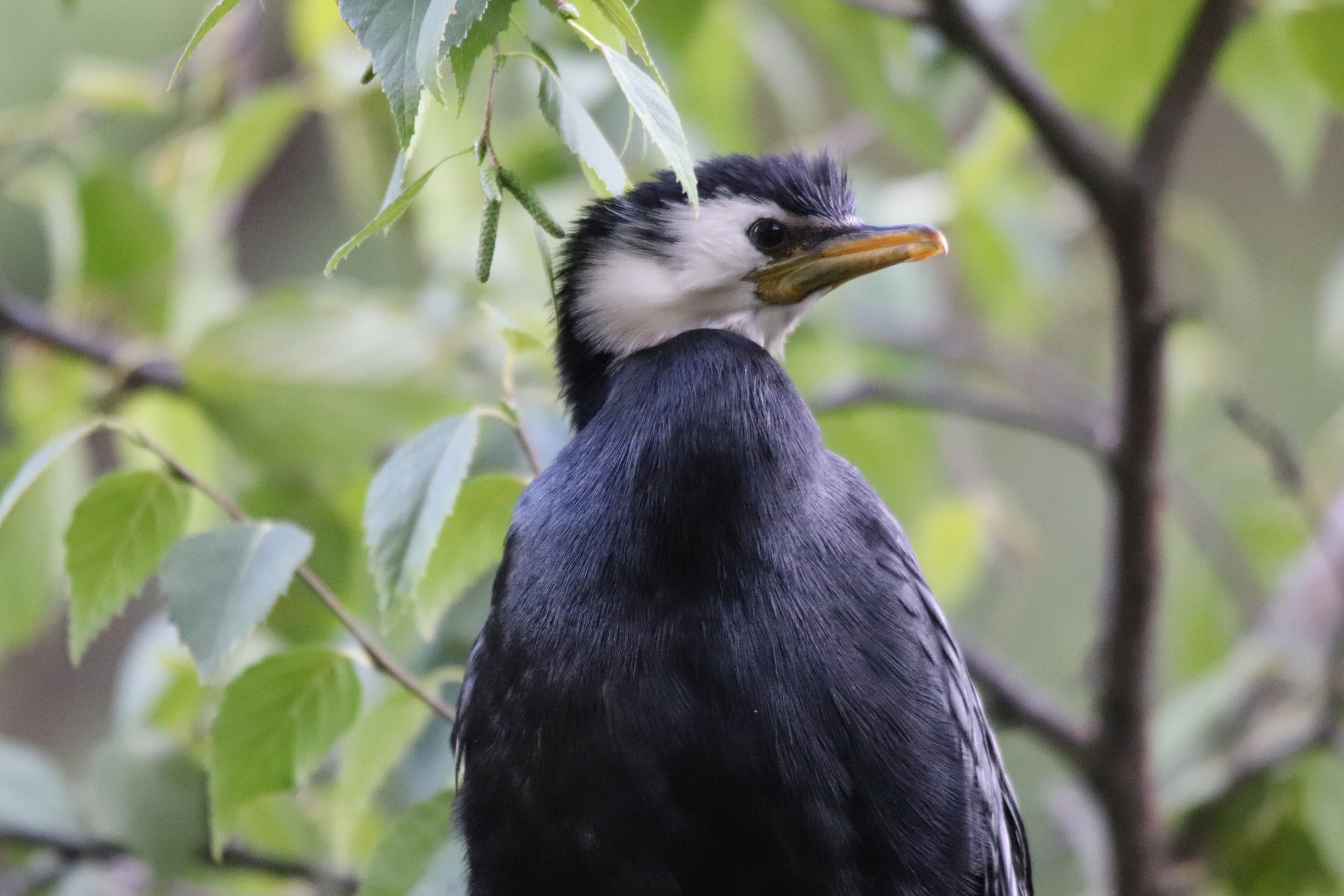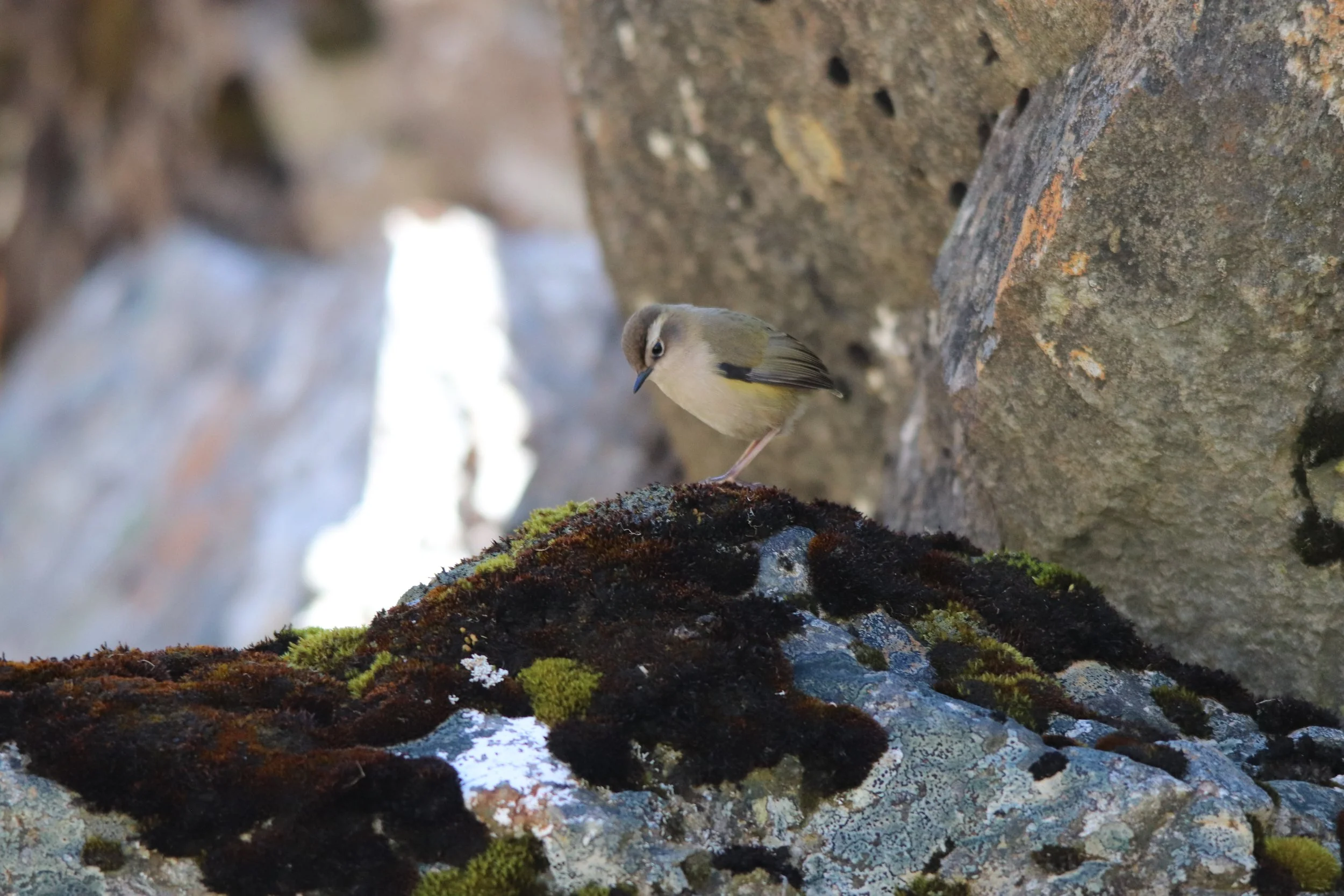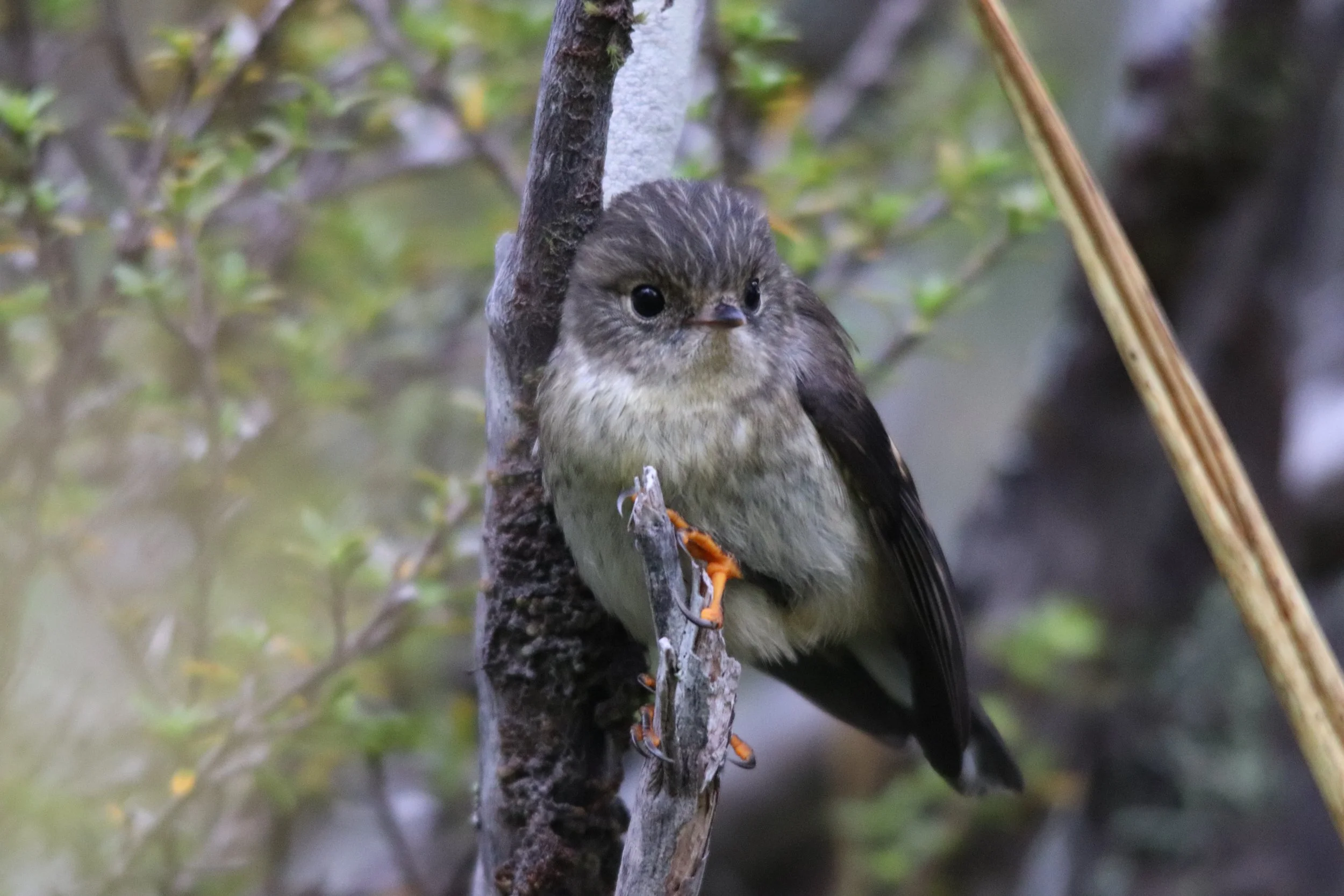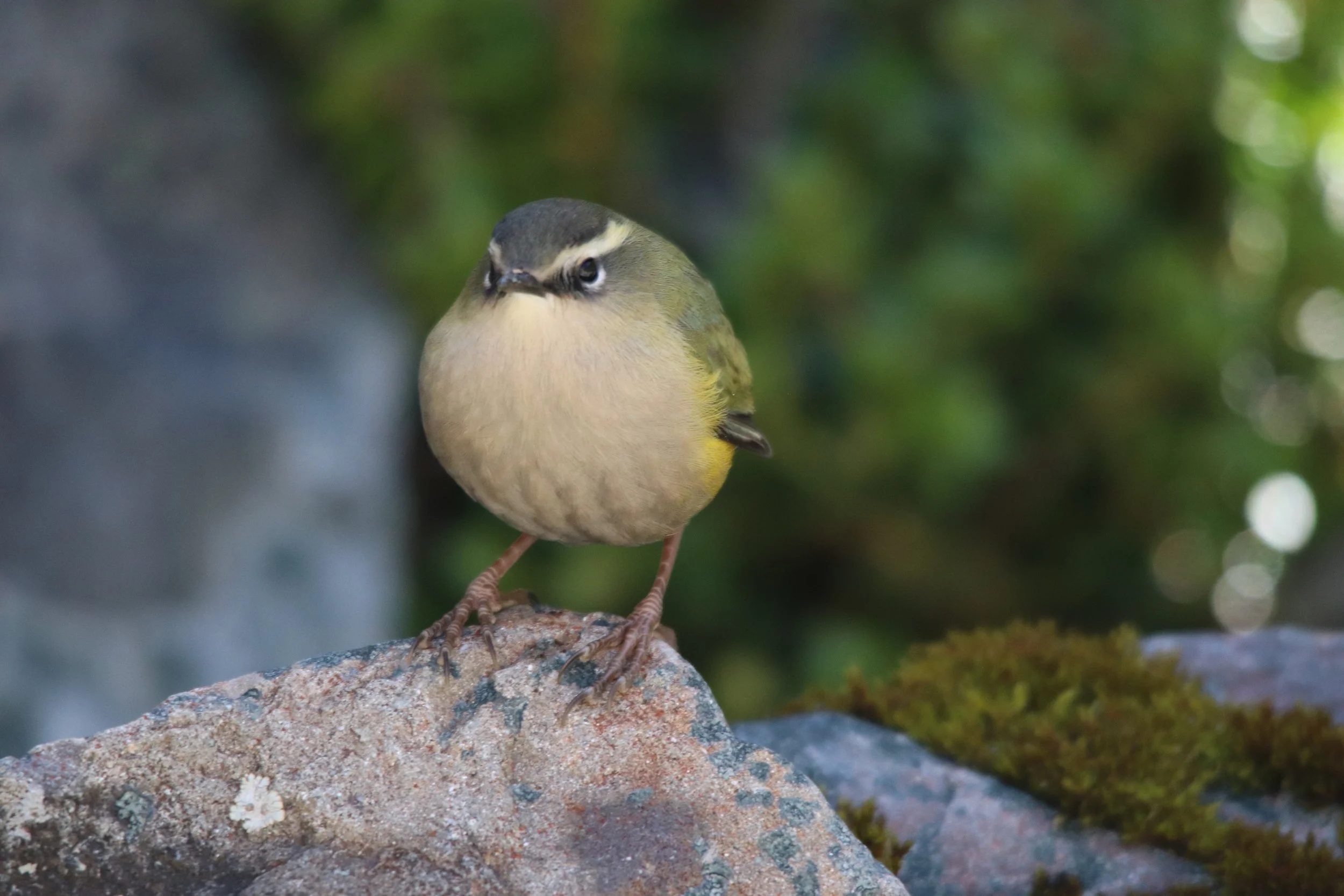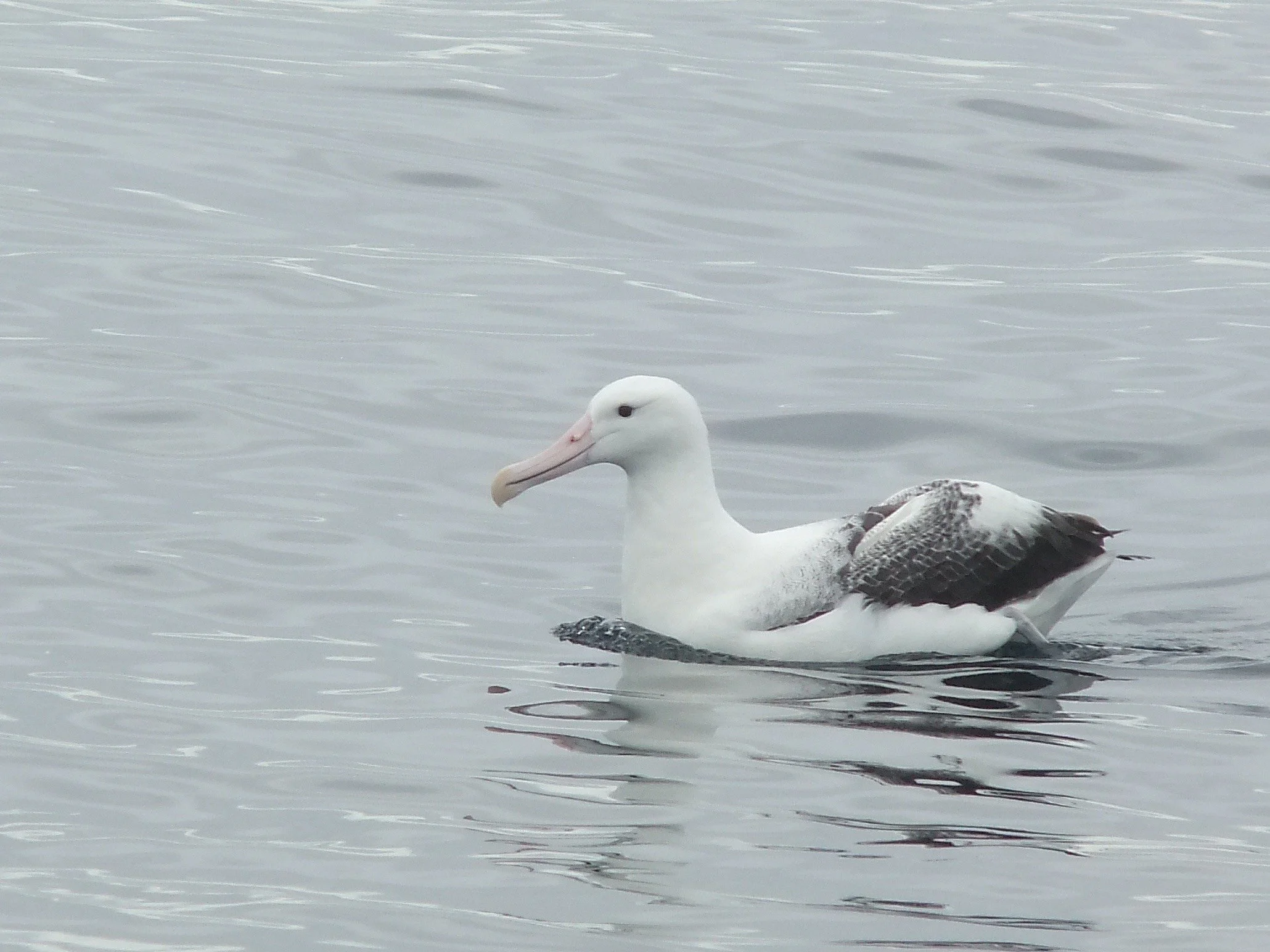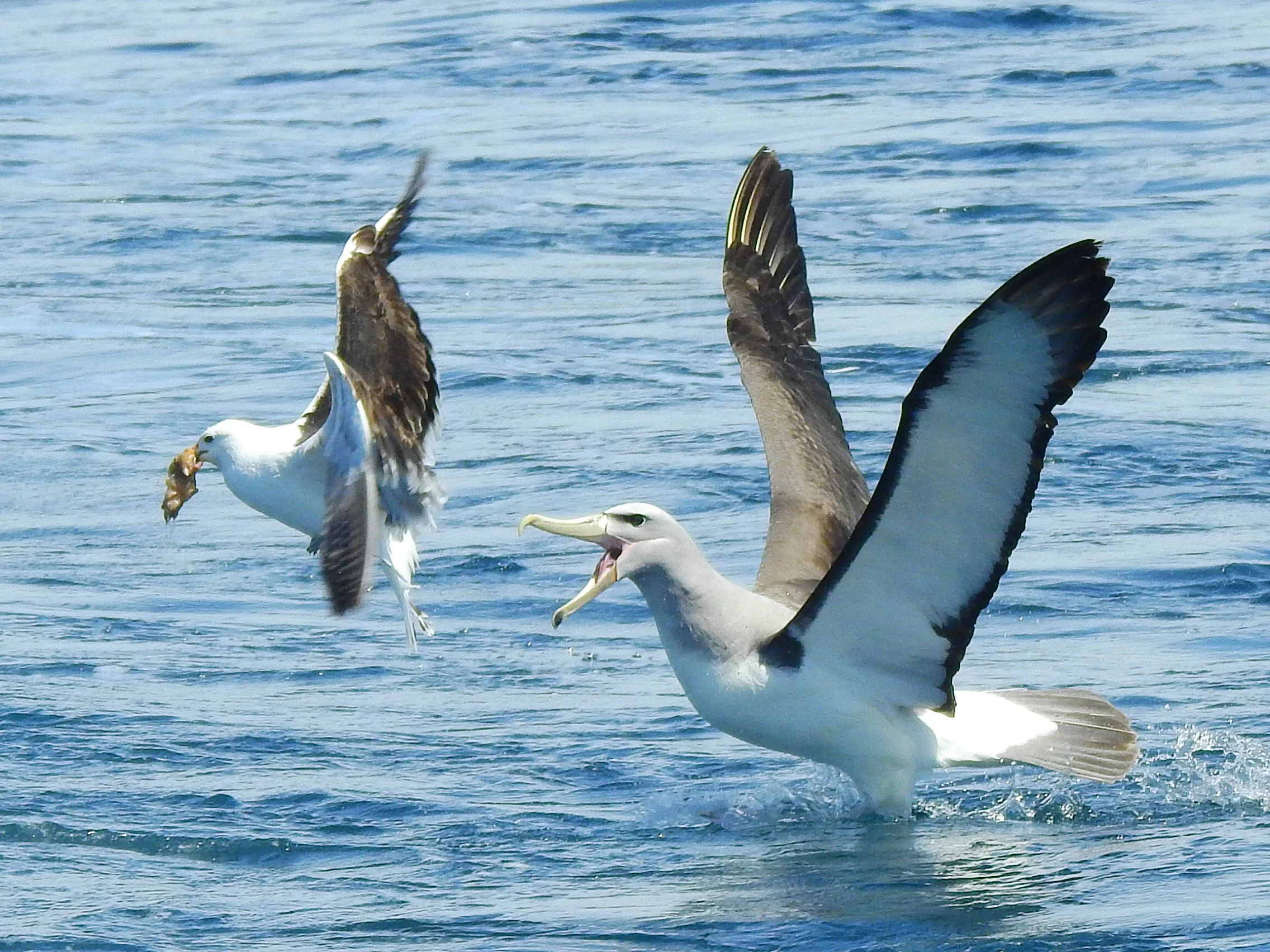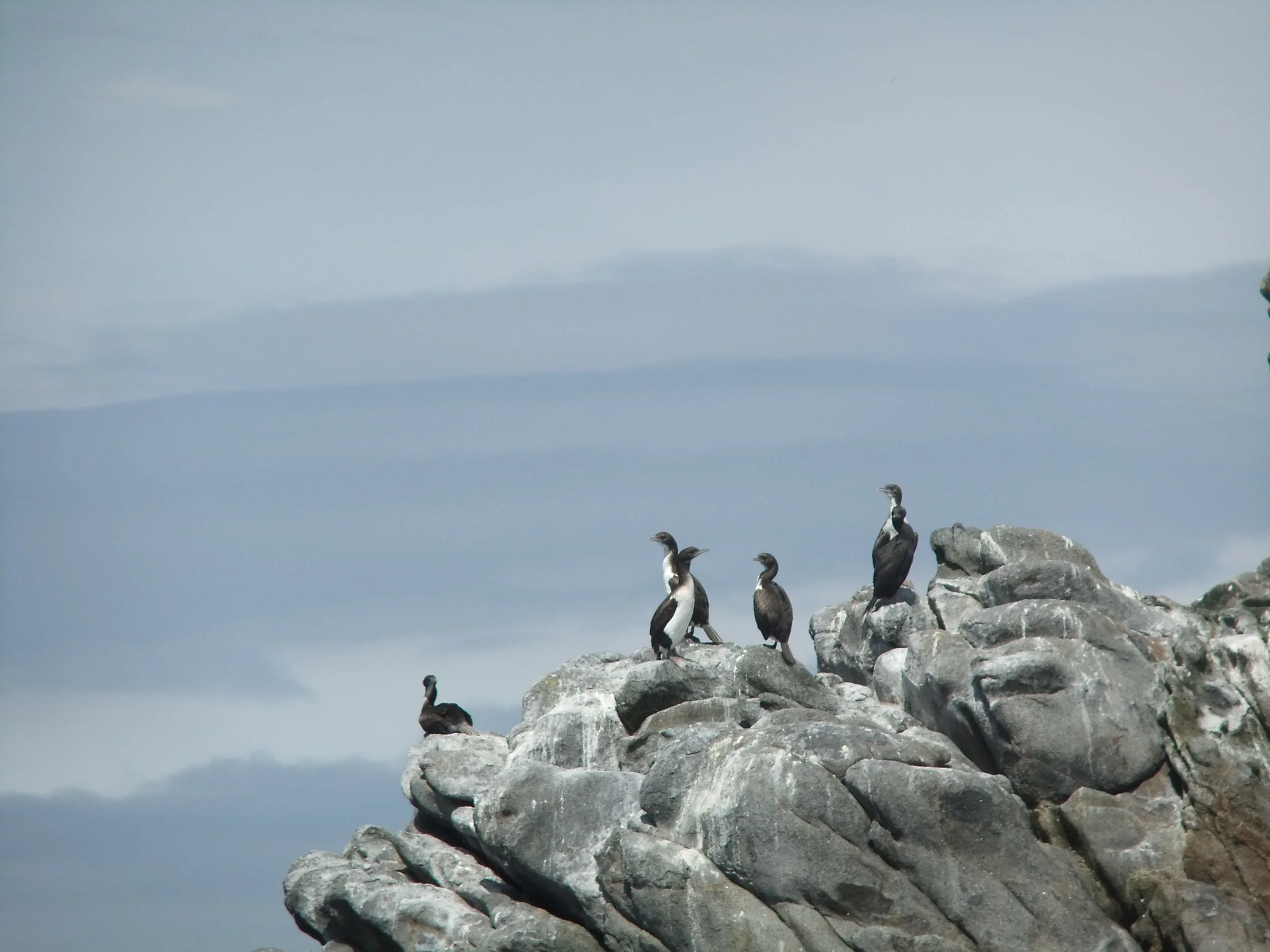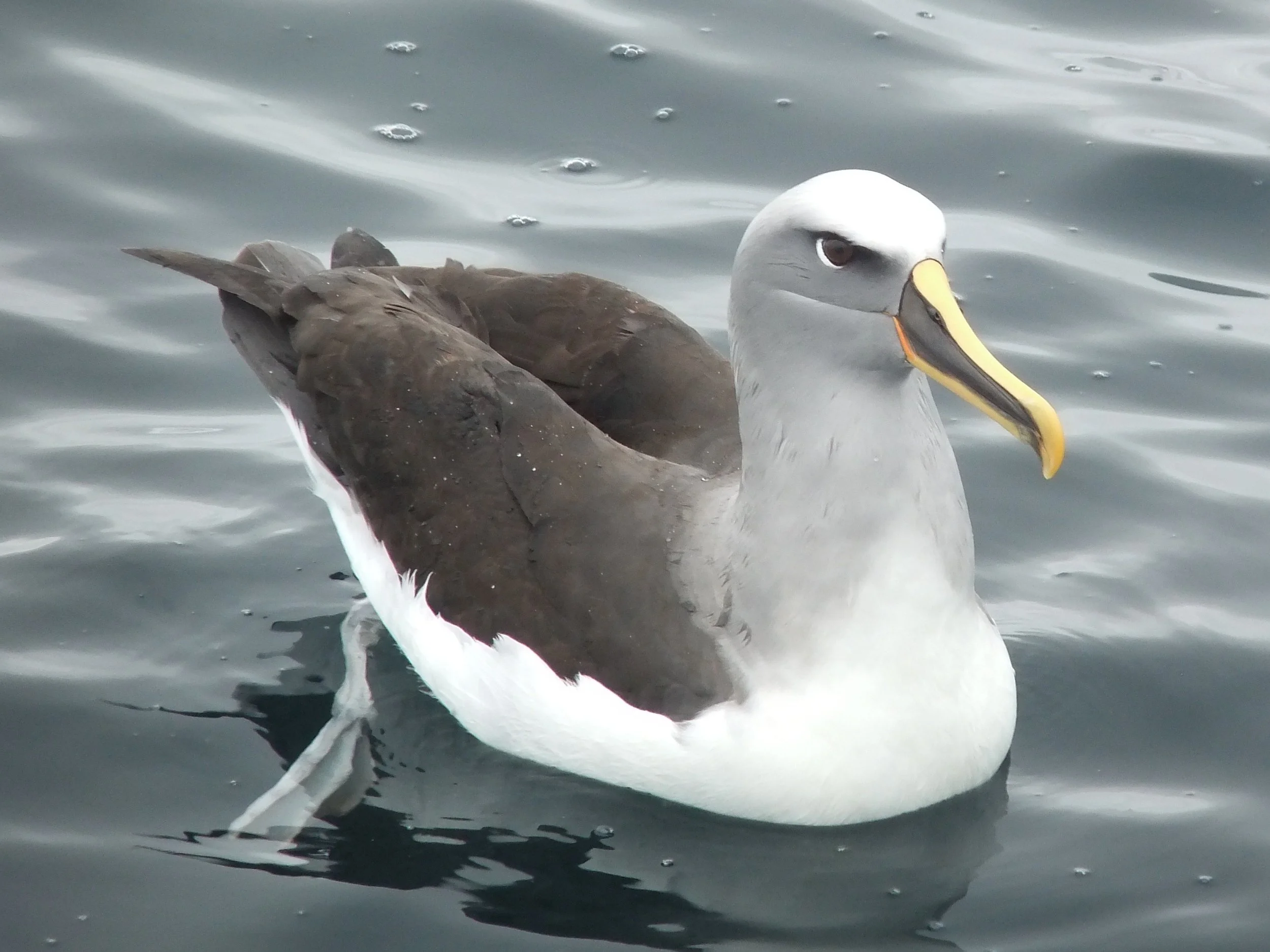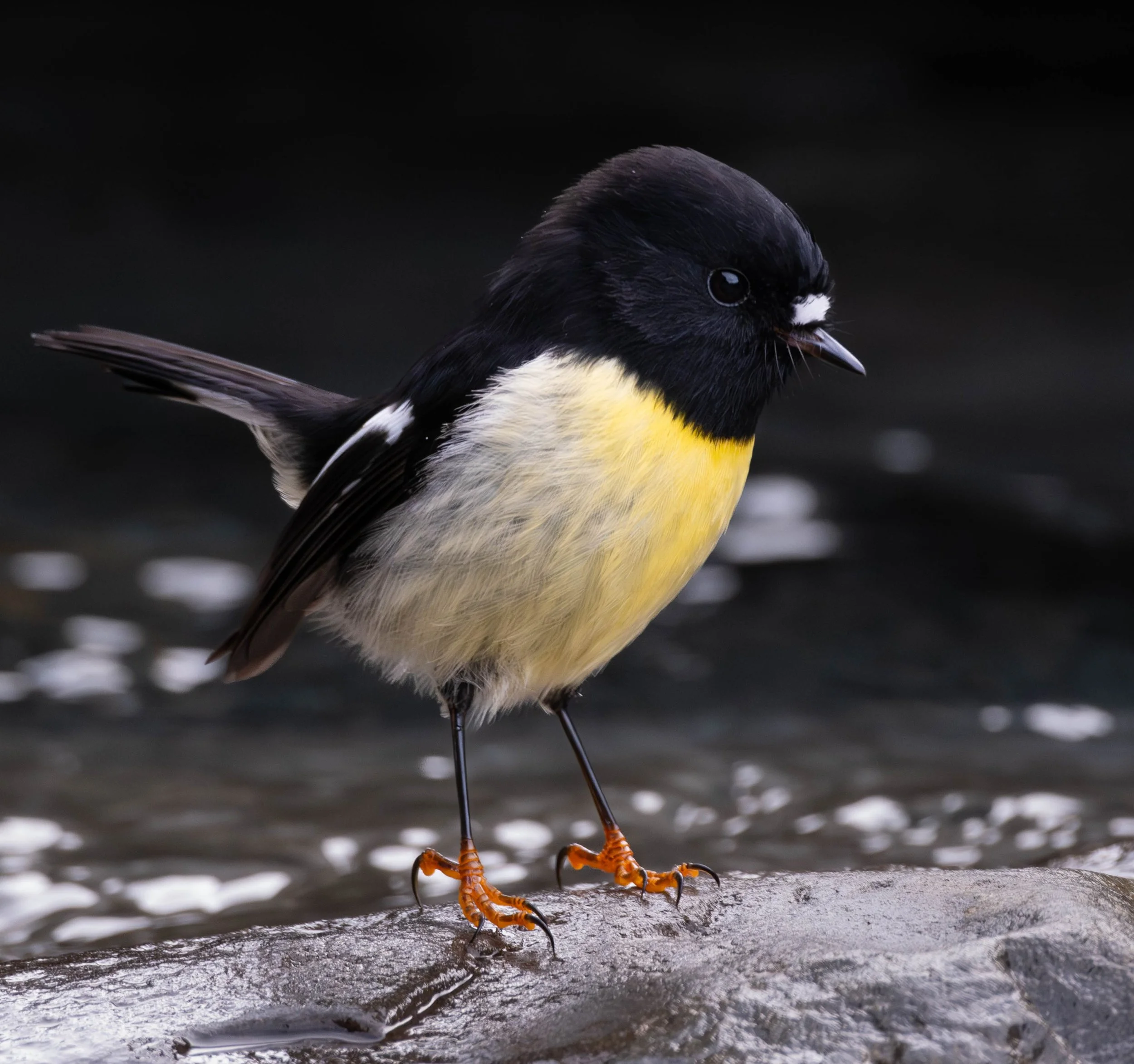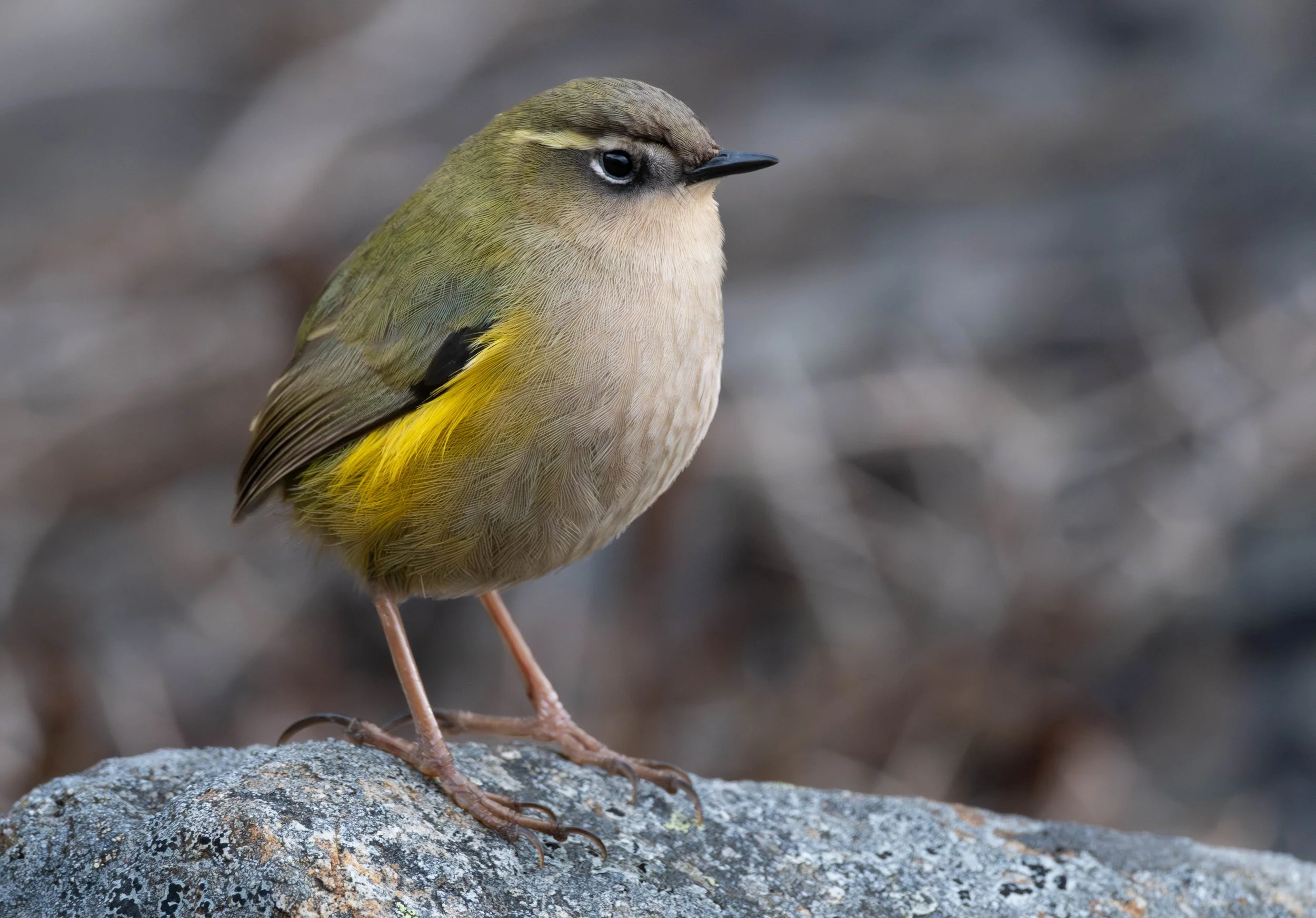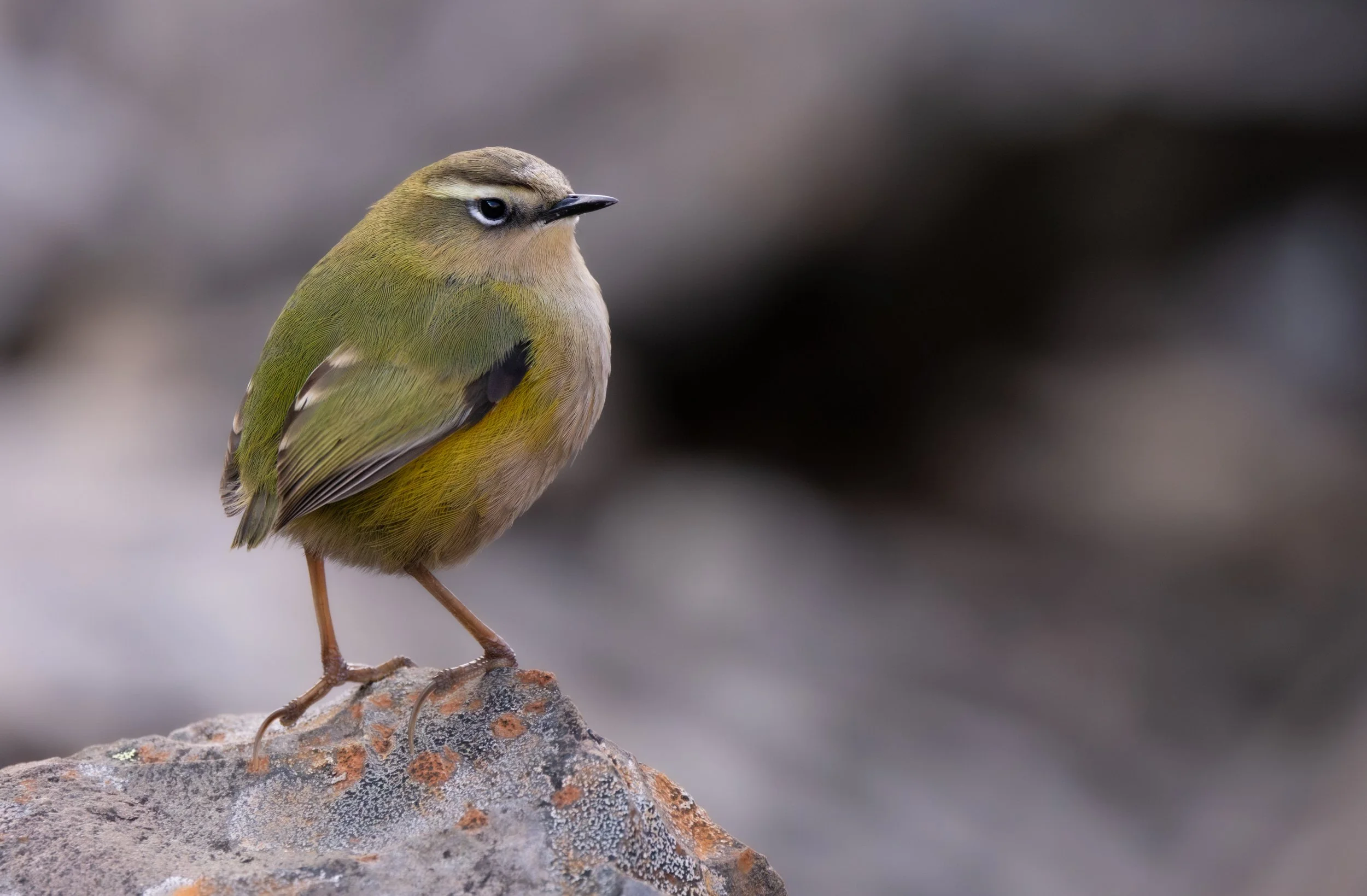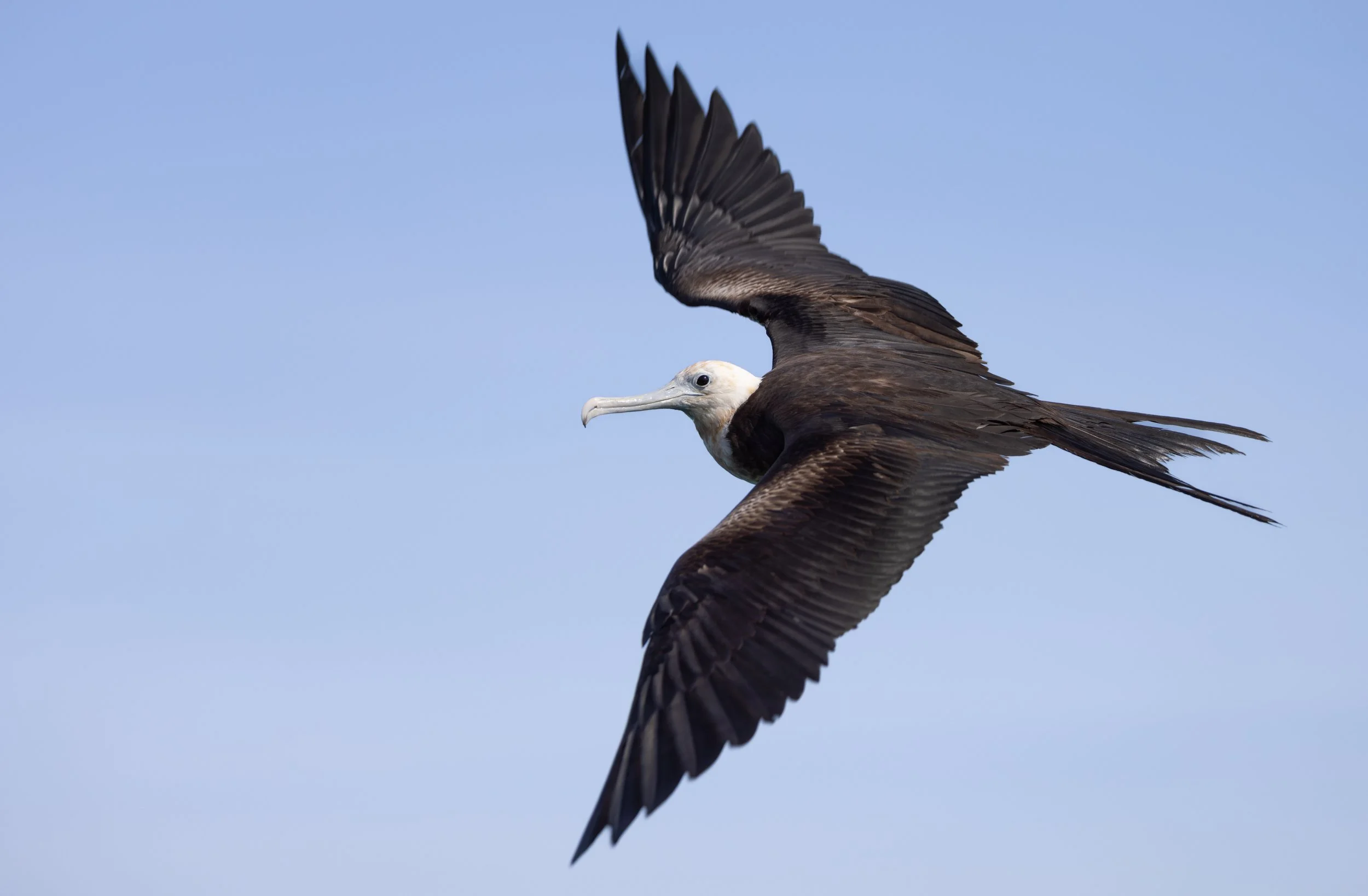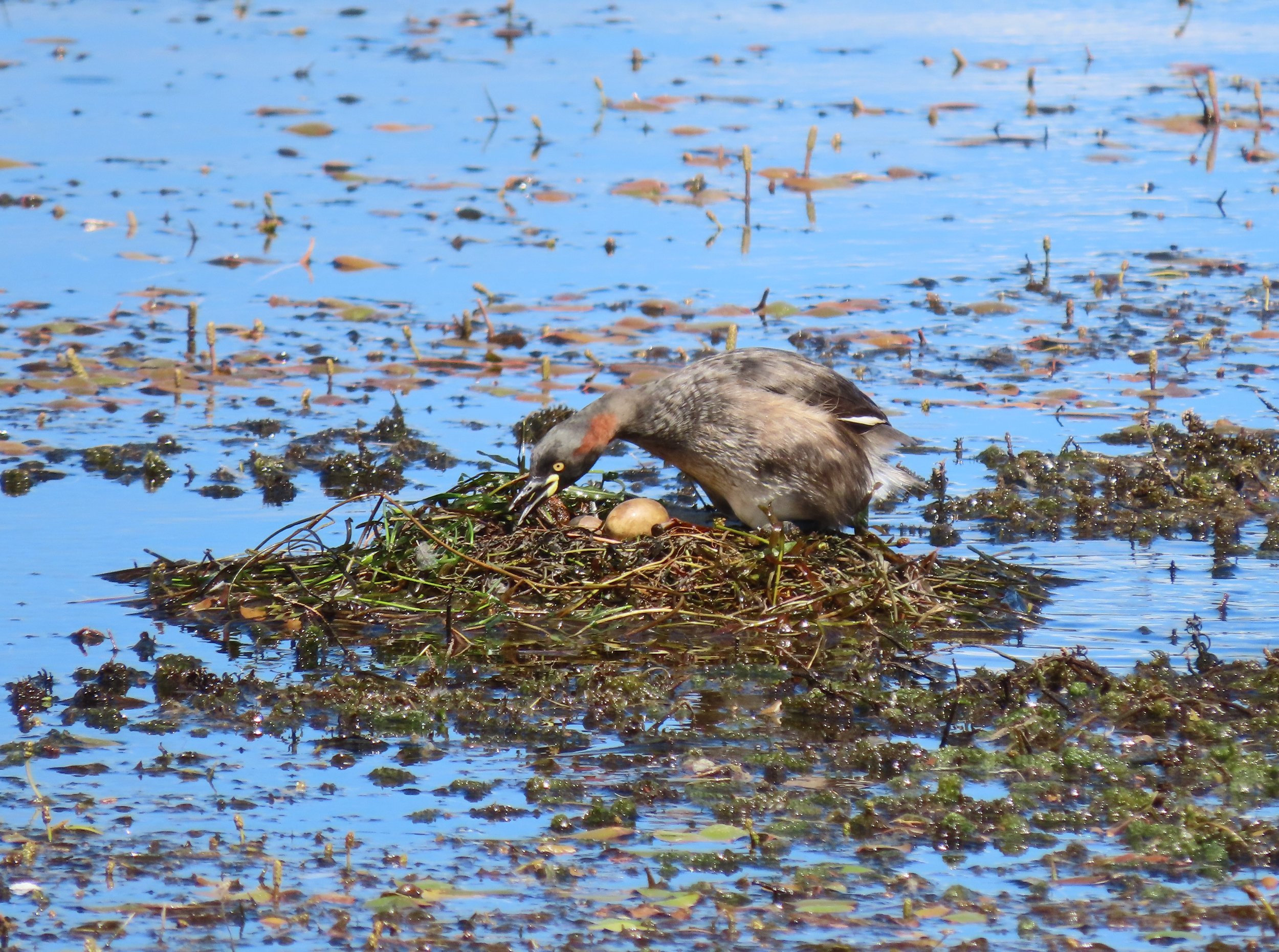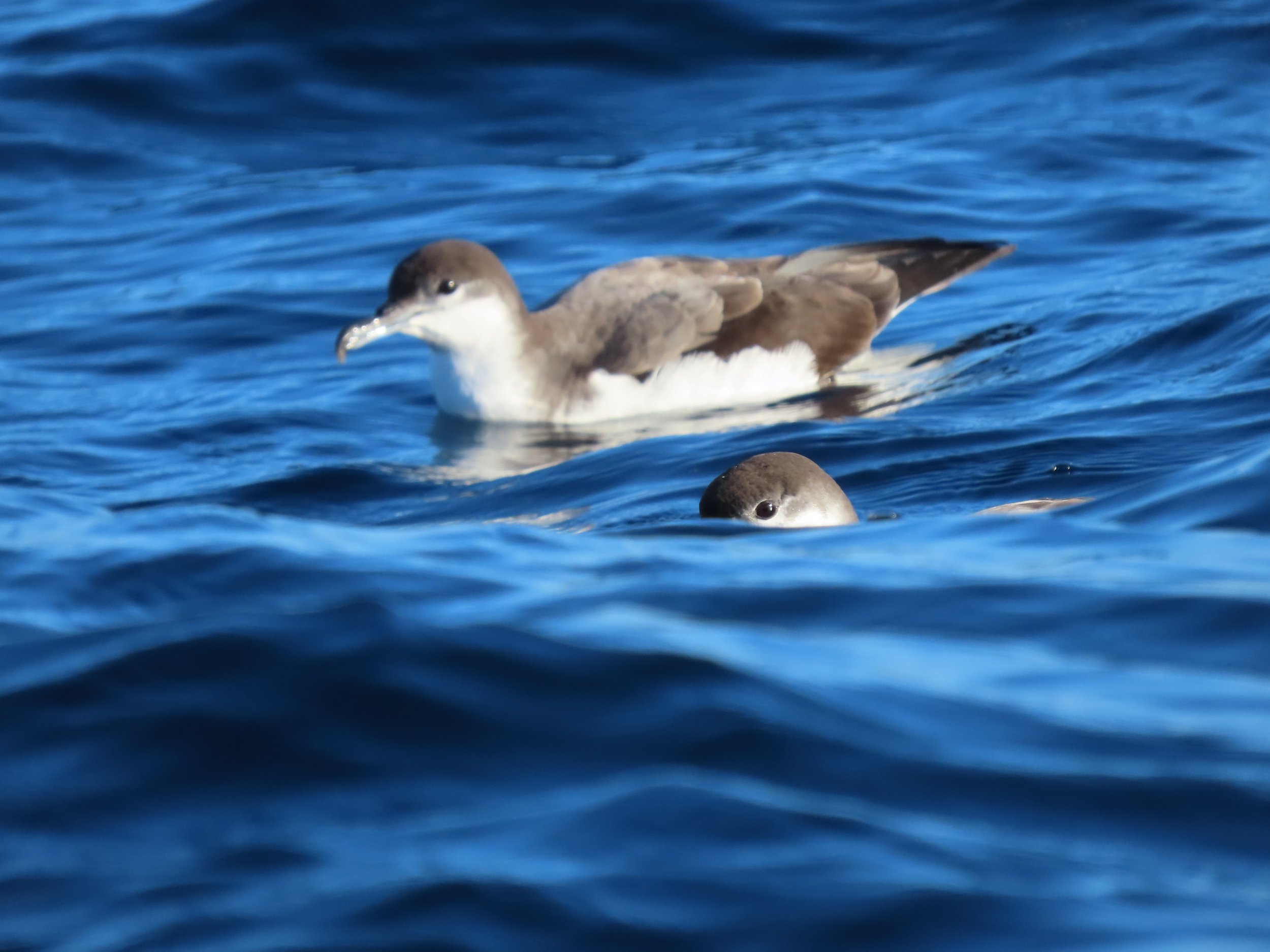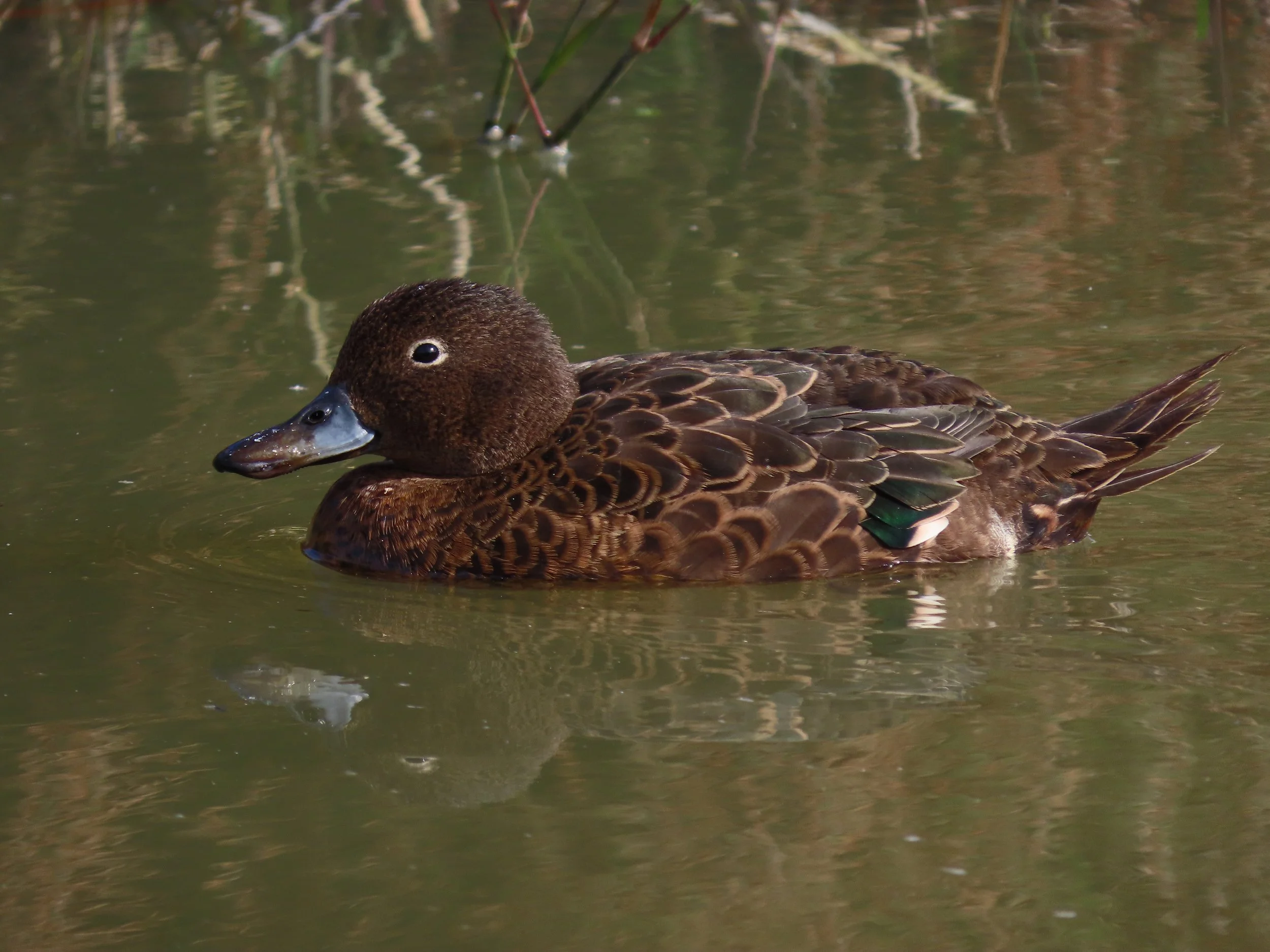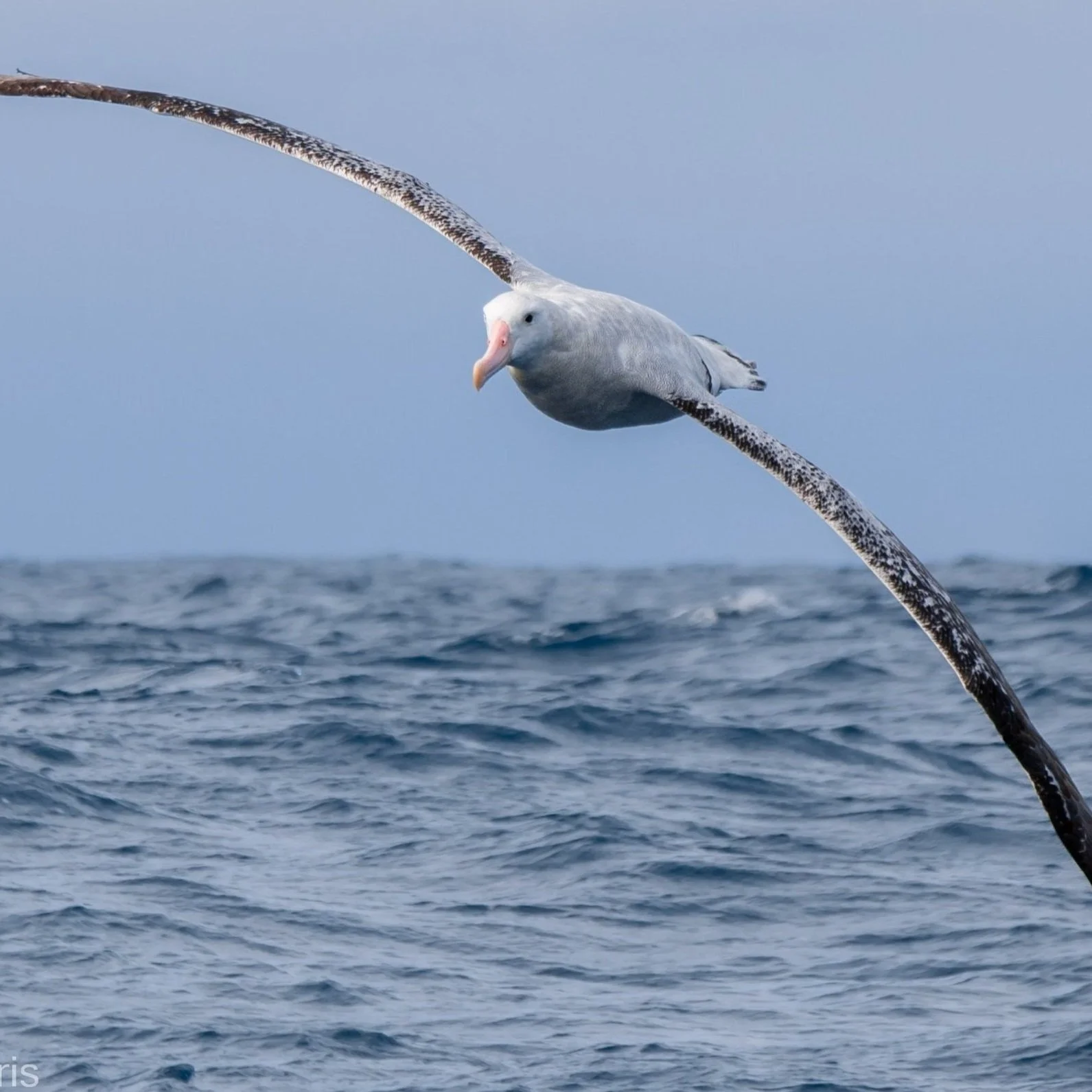Here are some of our Favourite Photos!
If you wish to use some of these pictures, please contact the owner of the photos.
Abe Reid
-
![]()
Australasian crested grebe | Pūteketeke
A female Australasian crested grebe feeding one of its newly hatched chicks a freshwater bully on Lake Pegasus.
-
![]()
Little owl | Ruru nohinohi
The Little owl, or Ruru nohinohi, is one of the three owls in New Zealand, and is the only introduced bird of prey in Aotearoa. The species was introduced sometime in the early 1900’s, only liberated in South Island, with the exception of a pair in Rotorua. This bird is one of three currently residing at Travis Wetland/Ōruapaeroa.
-
![]()
Northern royal albatross | Toroa
The majestic Toroa, or Northern Royal Albatross, is one of the largest flying birds in the world. Differentiated for the Southern Royal by it’s solid black wings, both species are endemic to New Zealand, and are considered Nationally Vulnerable. This photo was taken on the Kaikoura Albatross Encounter.
-
![]()
Southern New Zealand dotterel | Tūturiwhatu
One of the most endangered species of New Zealand bird, the Southern New Zealand Dotterel is in a steep decline. Unlike its closely related Northern subspecies they are hard to find and only breed on the mountain tops of Rakiura. Their are thought to be only 126 left and unfortunately are no conservation efforts in place. This bird was found feeding along one of the bays of Rakiura, one of the last reliable places to see these incredible birds, and only accessible after a long hike.
-
![]()
Banded rail | Moho pererū
The Banded Rail is a speedy, small rail that prefers saltwater mangroves rather than freshwater wetlands. They are rarely seen and camouflage surprisingly well into their habitat. This one was photographed creeping low amongst the mangroves of the Abel Tasman, one of the only places they can be seen in the South Island.
-
![]()
Pied shag | Kāruhiruhi
This common shag is found all along the New Zealand coast, with it’s distinctive black and white appearance making a lot of locals calling it a ‘Penguin’. It is also relatively common inland, though they’re noticeably lacking in numbers in several areas.
-
![]()
Banded dotterel | Pohowera
The small yet adventurous Banded Dotterel is a very distinct indicator that your on a New Zealand beach. With their chestnut chest and black stripe in breeding plumage they are a beautiful little bird. This on was on the coast of Stewart Island, where they associate with the much rarer Southern New Zealand Dotterel.
-
![]()
Erect-crested penguin | Tawaki nana hī
The Erect-Crested Penguin, or Tawaki Nana Hī, is an extremely rare penguin restricted to the Bounty and Antipodes Islands. Most New Zealand birders go their entire life without seeing one, but this one happened to appear on the Kaikoura Peninsula. Their population has been declining since the 1970s, when their were 230,000 breeding pairs, and now their are around 68,000 pairs.
-
Stewart Island fernbird | Mātātā
The Fernbird (or Mātātā) is a small and secretive bird, and the Stewart Island subspecies is much harder to see and photograph due to its limited range. They rarely fly long distances, preferring to jump through low scrubs.
Andy Xiong
-
Tomtit | Miromiro
A South Island Tomtit, quite a curious bird. This one was found in Makarora on the field camp organized for young birders by Aspiring Biodiversity.
-
Rock Wren | Pīwauwau
An elusive yet friendly Rock Wren. Rock Wren are apart of the family Acanthisittidae, an endemic and ancient lineage, which up until 1000 years ago had 7 species. Only the Rock Wren | Pīwauwau and Rifleman | Tītitipounamu have survived till now.
-
Little Shag | Kawaupaka
Although the Little Pied Shag is the most common Cormorant species around Aotearoa’s lakes and rivers, they can be quite flighty and tricky to photograph. They have many different morphs, ranging all the way from the fully white bellied morph to a fully dark morph. This one here is inbetween the two colour morphs, with a white face.
-
Rock Wren | Pīwauwau
An elusive yet friendly Rock Wren. Rock Wren are apart of the family Acanthisittidae, an endemic and ancient lineage, which up until 1000 years ago had 7 species. Only the Rock Wren | Pīwauwau and Rifleman | Tītitipounamu have survived till now.
-
Tomtit | Miromiro
A South Island Tomtit, quite a curious bird. This one was found in Makarora on the field camp organized for young birders by Aspiring Biodiversity.
-
Rock Wren | Pīwauwau
An elusive yet friendly Rock Wren. Rock Wren are apart of the family Acanthisittidae, an endemic and ancient lineage, which up until 1000 years ago had 7 species. Only the Rock Wren | Pīwauwau and Rifleman | Tītitipounamu have survived till now.
Audrey Austin
-
![]()
Southern Royal Albatross | Toroa
A Southern Royal Albatross, the bird with the largest wingspan in the world. This species is differentiated from Wandering Albatross by the black cutting edge on the bill.
-
Salvin’s Mollymawk | Toroa
A sneaky gull steals a snack off a Salvin's Mollymawk. This photo was taken off Stewart Island, where we regurlarly had 20+ mollymawks behind the boat.
-
![]()
Foveaux Shag | Mapo
Several Stewart Island Shag on a rock. These birds were photographed on Whero Rock, their largest breeding colony. Whero Rock used to have a single tree on it, but the guano the shags created killed it.
-
![]()
Buller's Mollymawk | Toroa
A Buller's Mollymawk | Toroa staring up at the boat and waiting for more food!
Ben Ackerley
-
![]()
Wrybill | Ngutu pare
The Wrybill is unique in that it is the only bird in the world with a sideways curved bill. They breed on the great braided rivers of Canterbury and Otago in spring then heading north in winter for their north-ward migration. With only around 5,000 birds left they are not that common, But there is still hope because it is thought their populations are increasing.
-
![]()
Gibson's albatross | Toroa
Seen on a pelagic off Kaikoura.
-
![]()
Tomtit | Miromiro
One of many seen around Arthur’s pass.
-
![]()
Kōtuku | White heron
One of the two resident white heron in the Christchurch city area.
-
![]()
Rock wren | Pīwauwau
New Zealand’s only true alpine bird seen up Otira valley in Arthur’s pass.
Caiden Binzegger
-
![]()
Rock wren | Pīwauwau
This adorable Rock Wren posed perfectly on a rock for a few second as it foraged along the Otira Valley Track.
-
![]()
New Zealand fantail | Pīwakawaka
A rare black morph Fantail in front of a beautiful autumn scene. It was a lovely morning in Nelson and the dawn sun was glowing through a stand of autumn forest when I spotted this fantail. I managed to snap this shot before it flew off!
-
![]()
Lesser Frigatebird
An exrtremely rare tropical vagrant to New Zealand waters, a Lesser Frigatebird. This one stayed for a while at Home Bay on Great Mercury Island. I was lucky enough to be able to get on a boat out to see it, where we were rewarded with some close passes. These birds are known for being pirates, as they often steal food from other birds and sometimes even catch and eat seabirds.
-
![]()
South Island robin | Kakaruai
As I walked along a track in Brook Waimarama Sanctuary in Nelson, I was stopped by a familiar call. I peered through the foliage and spotted this adorable South Island Robin. It soon curiously hopped towards me and sat on this branch scanning for bugs in the leaf litter.
-
![]()
Common diving petrel | Kuaka
On a calm day in the Foveaux Strait we were greeted by a flock of Common Diving Petrels. We stopped to admire these little birds and the stunning view of Stewart Island. It was awesome to watch them walk on water and then dive down in search of food.
-
![]()
Tūī
We saw dozens upon dozens of Tūī in Okarito when we stayed there. At some points you could see 40-50 feeding on harakeke! This one was right outside our accommodation on a sunny day.
Judah Gray
-
![]()
Tūī
Tui have two voice boxes.
-
![]()
New Zealand Scaup | Pāpango
A Scaup, one of New Zealand’s endemic ducks, preening in Auckland.
-
![]()
White-fronted Tern | Tara
White-fronted Terns breed between October and February.
-
![]()
Lilac-breasted Roller (Tanzania)
Rollers get their name because of the areal performances they put on when finding a mate.
-
![]()
Australasian Gannet | Tākapu
There are only 3 mainland gannet colonies in NZ that are accessible.
-
![]()
Crested Tern
This Great Crested Tern is the first to appear in New Zealand for 5 years, with the last one being in 2019.
-
![]()
Pied Shag | Kāruhiruhi
Taken at a shag colony near Wharakiki beach.
Lucy Dean
-
Australasian Little Grebe | Tokitokipio
An Australasian Little Grebe or Tokitokipio on a nest in Whangarei. This pair on the nest were very active, putting on a real show!
-
Buller's Shearwater | Rako
Buller's Shearwater or Rako, peeking out from behind a wave on a November Petrel Station trip.
-
Brown Teal | Pāteke
A Pāteke or Brown Teal photographed at some semi-local stormwater ponds. It's exciting to see rarer birds in urban areas!
-
![]()
North Island Fernbird | Mātātā
A Fernbird, also known as Mātātā, photographed in one of the Tiritiri Matangi wetlands. Although usually cryptic, this bird was in the open!
Samuel Amaris
-
![]()
Gibson's Albatross | Toroa
Photo taken offshore Kaikoura
-
![]()
Fantail | Piwakawaka
Photo taken at Akaroa
-
![]()
Bellbird | Korimako
Photo taken at Mt Somers
-
![]()
Pied Shag | Kāruhiruhi
Photo taken at Lyttelton Bay
-
![]()
Little Blue Penguin | Kororā
Photo taken at Akaroa
Saryu Mae
-
![]()
Australasian Bittern | Matuku-hūrepo
An elusive Bittern posing in a flooded paddock on the entry road to Big Sand Island!
-
![]()
Sacred kingfisher | Kōtare
A vibrantly coloured Kingfisher on a rock.
-
![]()
Kererū | New Zealand pigeon
A Kereru with a branch in its beak!
-
![]()
New Zealand Pipit | Pīhoihoi
A New Zealand Pipit, one of New Zealand’s most overlooked birds.
-
![]()
Sacred kingfisher | Kōtare
A colourful Kingfisher swooping over a mudflat and catching a crab.
Saul Ward
-
Brown Teal | Pateke
One of nine Brown Teal | Pateke at the Waikanae Estuary. Brown Teal | Pateke are endangered with only 3000 or so birds remaining.
-
![]()
Red-billed Gull | Tarapunga
Red-billed gull/Tarapunga, a once abundant coastal bird, resting at Ōtaki Beach.
-
![]()
Wrybill | Ngutuparore
A Wrybill/Ngutu Parore, resting on the sandflats at the Manawatu River Estuary.
-
![]()
Pied shag | Kāruhiruhi
A Juvenile Pied Shag checks me out at the Waimanu Lagoons, Waikanae
-
![]()
New Zealand dotterel | Tūturiwhatu
A Northern New Zealand Dotterel/Tuturiwhatu at the Waitohu Stream Estuary
-
![]()
New Zealand pipit | Pīhoihoi
A New Zealand Pipit/Pihoihoi, calling out for its nearby mate on the Makarora River, Otago
-
![]()
Black-billed gull | Tarāpuka
A Black-billed Gull at the Queenstown Waterfront, Otago
Zion Cooper
-
![]()
North Island robin | Toutouwai
A beautiful NI Robin perches on a mossy log. These incredible birds are very tame and are very cute (like the South Island equivalent)! Unfortunately, these birds are declining because of habitat loss and introduced mammalian predation. Now the best places to see them is in predator free sanctuaries and heavily trapped areas.
-
![]()
Australasian gannet | Tākapu
Gannets are even more stunning up close! That beautiful blue eye ring, yellow head, and pure white feathers put them among New Zealand's most beautiful birds.
-
![]()
Kea
The iconic Clown of Mountains, Kea are the smartest birds in the world. Their intelligence rivals chimps, crows, and dolphins.
-
![]()
Red-billed Gull | Tarāpunga
Known for being the notorious stealer of chips, Red-Billed Gull populations have suffered a hit in some of their largest colonies. All hope is not lost though for this ubiquitous bird because the colony on Taiaroa Head has experienced some substantial increases in numbers.
-
![]()
South Island fernbird | Mātātā
Fernbirds are one of the hardest birds to photograph due their quick movement and dense habitat. I was lucky to photograph this split-second moment in Abel Tasman National Park.


